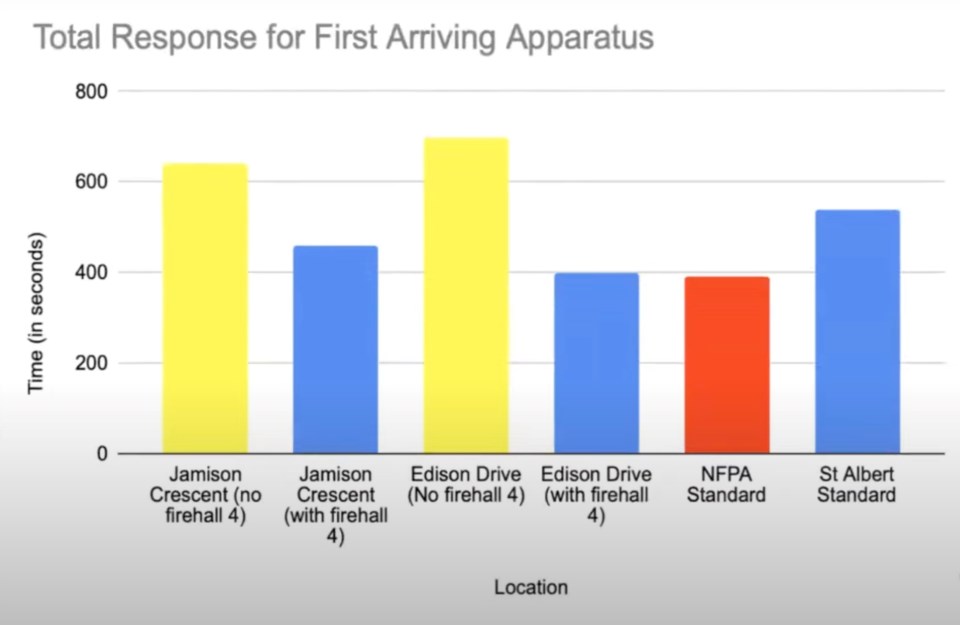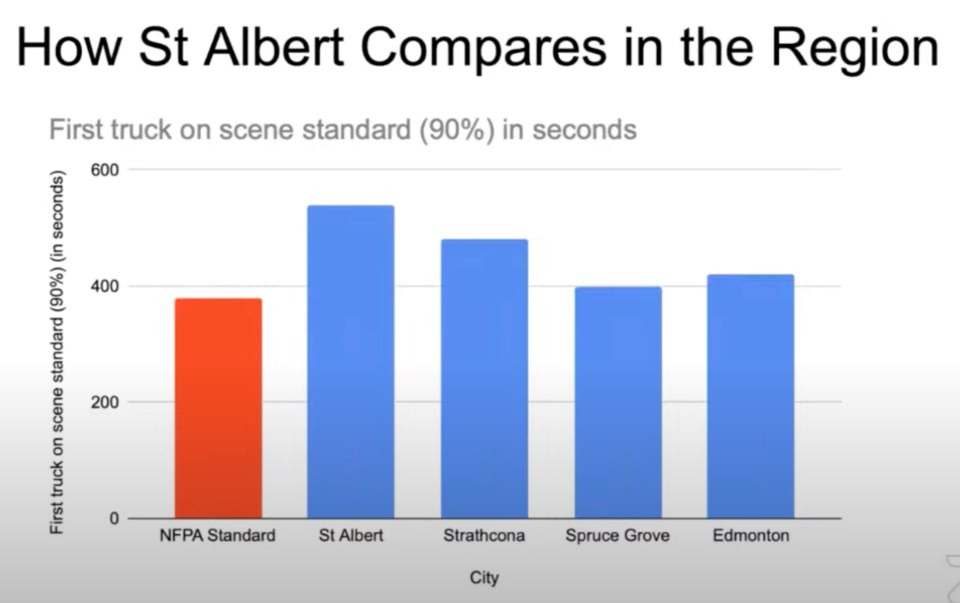What can a structure fire do in three minutes?
Doubling every 60 seconds, it can grow to eight times its original size.
Between five and seven minutes later (typically), flashover occurs: The dangerous moment when everything that can combust in a room does so simultaneously.
The president of the union representing St. Albert’s paramedic firefighters told city councillors Nov. 5 building Fire Hall #4 – regardless of when they decide to service the northeast – would improve "extended" response times there.
They’re staring down a $74 million proposal to bring water and sewer service to the growing district, having only weeks ago approved a similar plan with a similar price tag for the southwest.
Greg Harvey, president of Local 2130 of the International Association of Fire Fighters (IAFF), urged the politicians to build the fire hall whether they approve the broader infrastructure program or not, using cisterns or other solutions to bring water to its lot.
Lives could depend on it.
Today, having at least one vehicle on scene within nine minutes 90 per cent of the time is the standard St. Albert Fire Services uses. The National Fire Protection Association (NFPA) standard is six minutes, 20 seconds.

"The discrepancy not only affects public safety, but it also compromises the effectiveness of our firefighting efforts," he said.
Harvey said meeting the national standard would have an impact on medical calls, too, heart attacks in particular: brain cells begin to die after four-to-six minutes without oxygen. At nine-to-10 minutes, survivability approaches zero.
Already, many homes in Jensen Lakes and Erin Ridge North — “everything north of Costco” — would take longer than nine minutes to respond to.
Response times for other parts of the city including Riverside and Campbell Business Park are also beyond the national standard, he said.
The plan as it stands is to build the newest fire hall west of the big-box giant.
“Obviously, we’d like to get there quicker,” Harvey said, referring to a table showing St. Albert has longer response times than Edmonton, Spruce Grove and Strathcona County. “We are the highest response time of all the full-time services in the region.”
(It’s worth noting that none of the other full-time services are meeting the 6:20 NFPA standard, either. Spruce Grove is closest, according to Harvey’s data.)
The nine-minute response time includes 30 seconds for the initial call to be received and transferred from RCMP dispatch, 95 seconds for processing by fire dispatch, 80 seconds for firefighters to gear up and "turnout," and five minutes, 35 seconds of driving time.
When the fire service was accredited by a third party in 2016, it was recommended it work to reduce its response-time benchmark.
“We’d like to see this fire hall move ahead so this area of the city can receive the same response that a good portion of the city is getting already,” he said.
Council accepted Harvey’s report as information.




